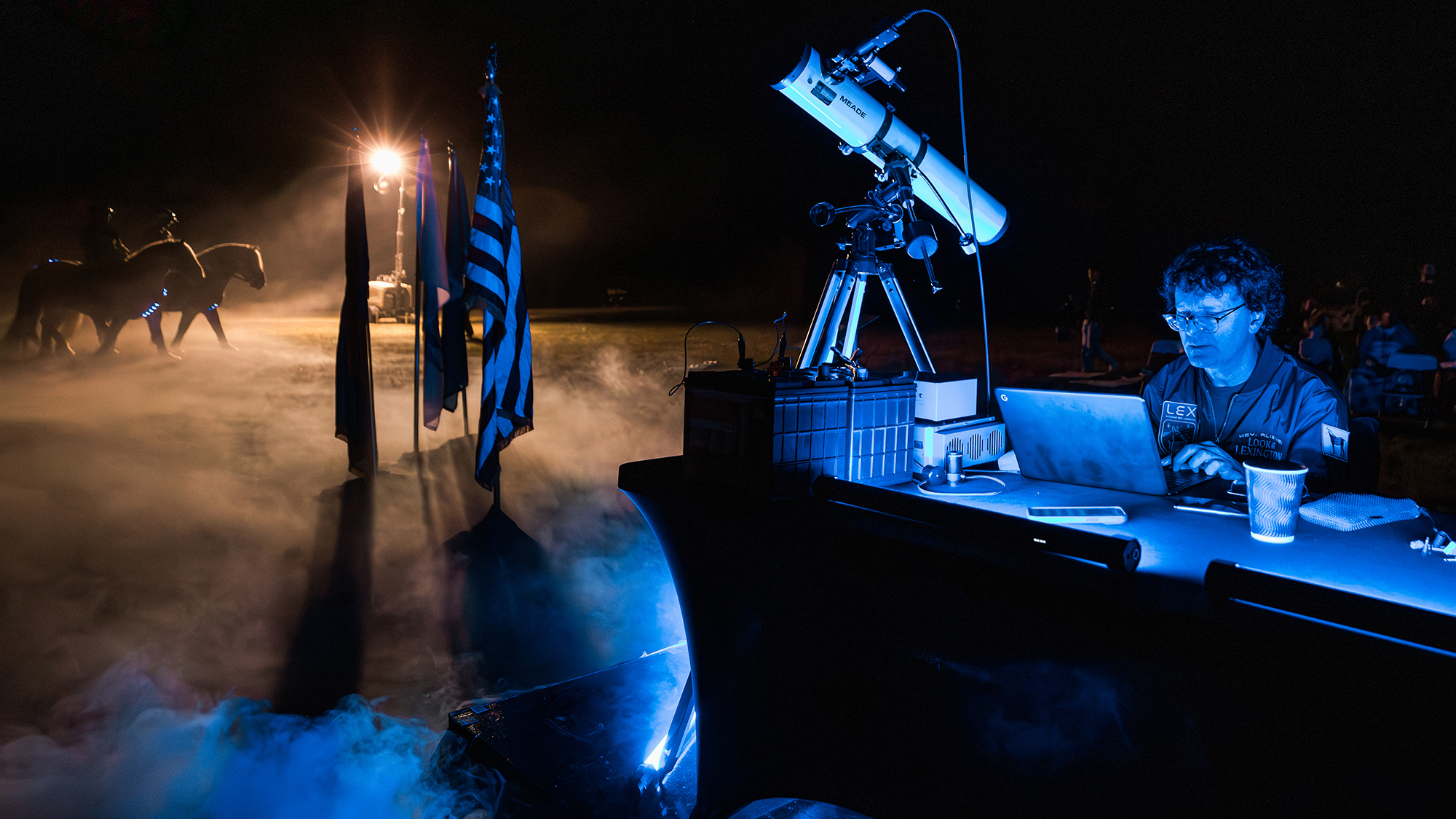

Signs of humanity have traveled through space ever since the very first radio signals left the Earth’s atmosphere. We even made concerted efforts to broadcast evidence of our existence through projects like the historic Voyager spacecraft recordings—but an official intergalactic tourism campaign advertising alien vacations to the “Horse Capital of the Word?” That’s a first.
[ Related: How scientists decide if they’ve actually found signals of alien life ]
The Lexington Convention and Visitors Bureau (VisitLEX) recently turned to University of Kentucky professor and longtime SETI advocate, Robert Lodder, to assemble experts from various disciplines including linguistics, philosophy, and design to attract a unique target audience: (potential) extraterrestrial lifeforms. More specifically, any extraterrestrial life possibly residing within the TRAPPIST-1 system.
Located approximately 40 light-years away in the Leo constellation, TRAPPIST-1 is by far the most studied planetary system outside of our own. There, seven rocky planets orbit a small red dwarf star, three of which reside within its “Goldilocks zone”—the region astrobiologists believe could be conducive to supporting life.

“Many previous transmissions have employed the language of mathematics for communication, and our team did, too,” Lodder tells PopSci. “But we decided that extraterrestrials might be more interested in things unique to Planet Earth than Universal Truths like mathematics, so if we seek to attract visitors, it would be best to send something interesting and uniquely Earth.”
Collaborators ultimately decided on a package including black-and-white photographs of rolling Kentucky bluegrass hills, an audio recording of local blues legend, Tee Dee Young, and an original bitmap illustration—a type of image in which programmers use basic coding to create a grid with shaded blocks that form rudimentary images. Among other subjects, this bitmap art includes renderings of humans, horses, the elements necessary for life (as we know it), alongside the chemical composition maps of ethanol and water, aka alcohol—more specifically to Kentucky, bourbon.
With the message’s contents compiled, Lodder’s team then converted their advertisement into a one-dimensional array of light pulses using a computer-laser interface aimed at TRAPPIST-1. On a clear, dark autumn evening, VisitLEX hosted researchers and local guests at Kentucky Horse Park to fire off their tourism package into space.
While lasers are increasingly replacing radio communications in space due their increased data storage capabilities and lower costs, transmissions must be strong enough to travel millions of miles without degrading. This requires equally strong equipment, such as the Deep Space Optical Communications array aboard NASA’s Psyche spacecraft.
VisitLEX’s laser is far weaker than NASA’s equipment, but Lodder believes that at least some of the transmission’s light photons “will almost certainly” reach TRAPPIST-1. That said, it’s difficult to know if there will be enough photons to fully decode their message.
“The alien receiving technology could be worse than ours, or much better,” says Lodder.
[ Related: JWST just scanned the skies of potentially habitable exoplanet TRAPPIST-1 b ]
Regardless, if ETs ever do make a pitstop in Lexington because of VisitLEX’s interstellar commercial, it likely won’t happen until at least the year 2103—40 light-years for the broadcast to reach TRAPPIST-1, followed by another 40 light-years to travel the approximately 235-million mile trek over to Earth, assuming they’re capable of traveling at the speed of light. It all might sound like a lot both logistically and technologically, but both VisitLEX and Lodder’s team swear it’s worth the planning.
[ Related: To set the record straight: Nothing can break the speed of light ]
If there’s anyone out there listening and able to pick up this kind of admittedly weak signal—and if they have a taste for oak barrel aged bourbon and/or horses—well…
Update 1/12/24 9:00am: PopSci received the following response from Jan McGarry, Next Generation Satellite Laser Ranging Systems Deputy Lead at the NASA Goddard Space Flight Center, and her retired colleague, John Degnan:
“The distance to the nearest star is 2 light years away or many orders of magnitude farther than the edge of our solar system (Pluto). Since the strength of a laser communications link is proportional to 1 divided by the distance squared, it is highly unlikely that a laser system would be able to transfer any meaningful amount of information over that distance let alone one 20 times farther away where the signal would be 400 times smaller.”